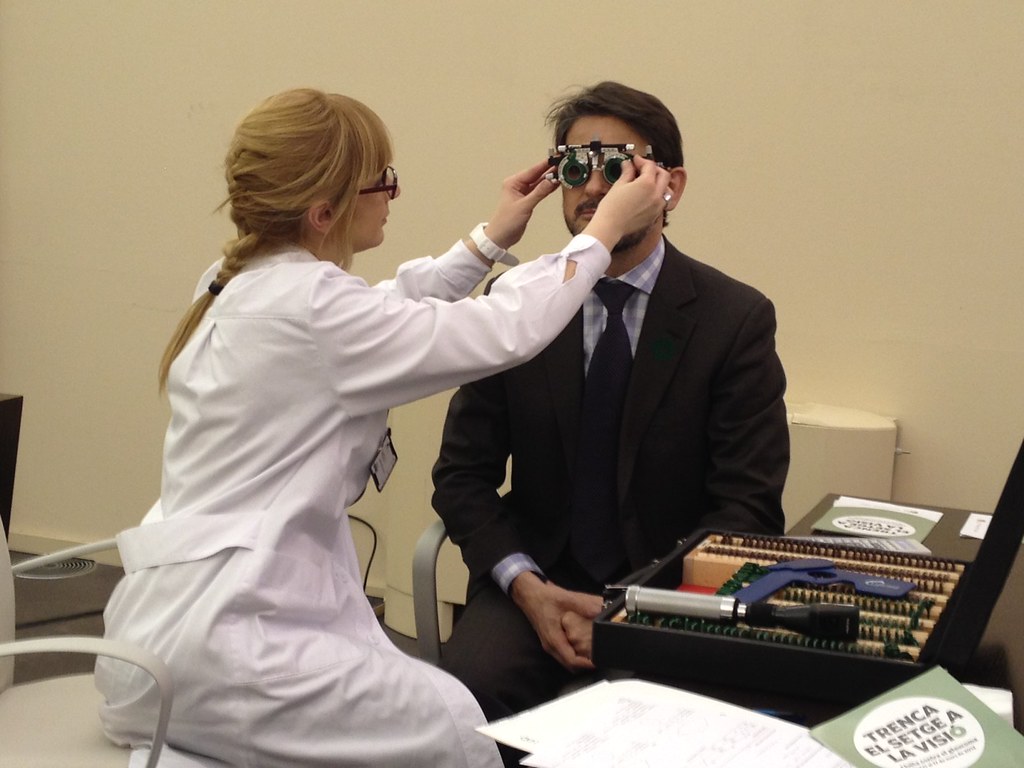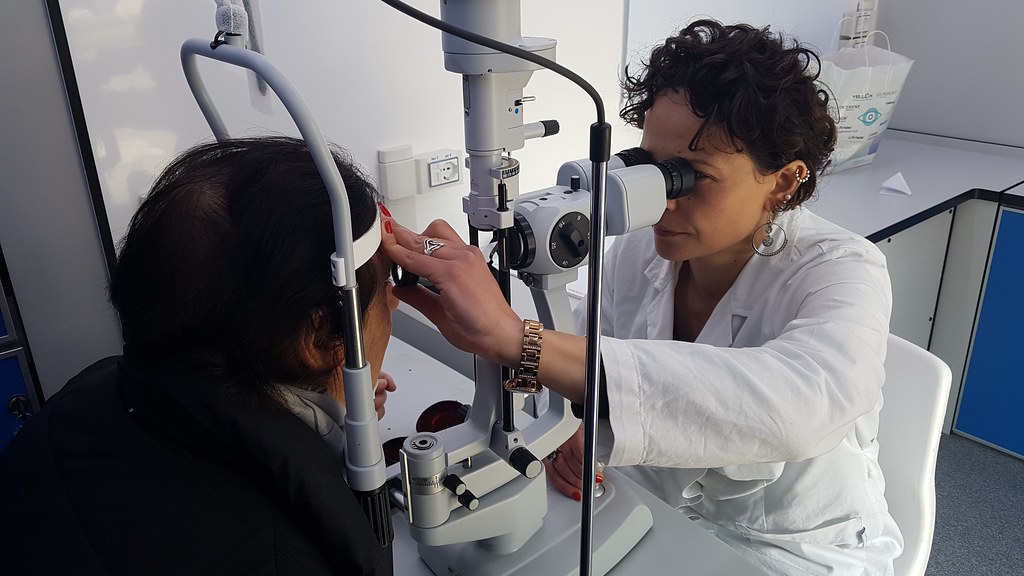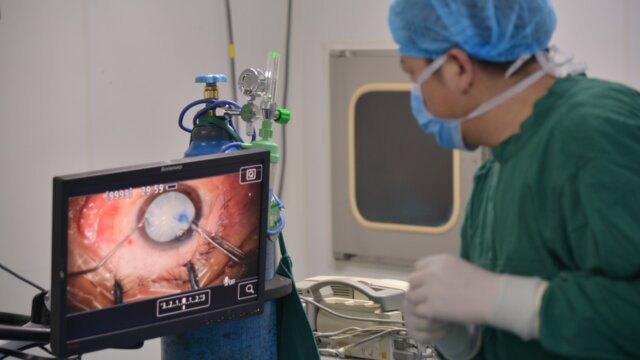FTC disclaimer: This post may contains affiliate links and we will be compensated if you click on a link and make a purchase.
Glaucoma, a leading cause of irreversible blindness, affects millions globally. It’s characterized by optic nerve damage due to fluid buildup in the eye.
This article seeks to focus on the two main types of glaucoma, open-angle and closed-angle, shedding light on their symptoms, causes, and treatment options.
Open-angle Glaucoma
This most common type results from fluid buildup in the front part of the eye, causing pressure that damages the optic nerve over time. Symptoms may include patchy blind spots in peripheral vision, progressing to difficulty seeing things in central vision.
Closed-angle Glaucoma
In contrast, closed-angle glaucoma occurs when the iris blocks fluid from draining out of the eye, leading to a sudden increase in intraocular pressure. Symptoms can be quite severe, including intense eye pain, nausea, blurred vision, and even colored rings around lights.
Understanding the differences between these types of glaucoma is key to managing the condition effectively and preserving vision. Therefore, regular eye check-ups are crucial for early detection and treatment.
Difference between open-angle and closed-angle Glaucoma
Glaucoma is a prevalent eye condition that primarily impacts the optic nerve, leading to potential vision loss. This damage is often a result of increased intraocular pressure within the eye.
The optic nerve, vital for vision, transmits visual information from the eye to the brain, and damage to this nerve can progressively result in the loss of peripheral and eventually central vision.
There are two primary types of glaucoma: open-angle and closed-angle.
Open-angle glaucoma, the most common form, is characterized by poor outflow of the drainage canals in the eye, leading to increased pressure. It has no symptoms and develops gradually over several years.
On the other hand, closed-angle glaucoma, less common in the U.S., results from a mechanical obstruction in the eye’s drainage system causing a sudden rise in pressure. This type of glaucoma can develop rapidly and is often referred to as acute narrow-angle glaucoma.
Understanding Open-Angle Glaucoma
Often referred to as the “silent thief of sight”, open-angle glaucoma is the most common form of glaucoma.
It is characterized by a gradual loss of peripheral vision due to damage to the optic nerve, often going unnoticed until significant damage has occurred. This comes as a result of increased eye pressure caused by a slow clogging of the eye’s drainage canals, leading to an increase in the eye’s intraocular pressure (IOP).
Risk Factors for Open-Angle Glaucoma
Risk factors for developing this type of glaucoma include age, a family history of glaucoma, and certain medical conditions such as diabetes.
Regular eye exams play a crucial role in the early detection and management of open-angle glaucoma, helping to prevent irreversible vision loss.
Management of open-angle glaucoma principally focuses on lowering the eye pressure, often starting with medication in the form of eye drops. In some cases, however, laser treatment may be necessary.
Understanding Closed-Angle Glaucoma
Closed-angle glaucoma, an unusual form of glaucoma, is characterized by a sudden increase in eye pressure. This increase results from a blockage in the eye’s drainage angle, inhibiting the proper outflow of fluid.
Symptoms of Closed-Angle Glaucoma
The onset of closed-angle glaucoma often brings a variety of symptoms. These may include eye redness, severe eye pain, and blurry vision. Some individuals may also experience headaches, nausea, and the appearance of bright halos around objects (Glaucoma.org).
Risk Factors for Closed-Angle Glaucoma
Several risk factors can increase the likelihood of developing closed-angle glaucoma. These include age, particularly between 60 and 70 years, ethnicity, with those of Southeast Asian or Alaskan Native origin being at higher risk, and certain eye conditions (NCBI). Understanding these factors and seeking regular eye check-ups for early detection and management is vital.
Causes of Glaucoma
Glaucoma, a common eye problem, often arises due to a complex interplay of multiple factors.
Genetics plays a significant role, with a strong family history being a potential key indicator. Age is another major factor, with the risk of developing glaucoma increasing as we grow older.
Certain medical conditions, such as diabetes and high blood pressure, can exacerbate the risk. These conditions can contribute to increased pressure in the eye, leading to potential optic nerve damage and ultimately, vision damage.
The potential causes of glaucoma highlight the utmost importance of early detection and prompt treatment in order to prevent the irreversible damage that this disease can cause. Regular eye exams can help to detect glaucoma in its initial stages, enabling immediate steps to be taken to protect your vision.
Treatment Options for Glaucoma
Glaucoma, specifically open-angle glaucoma, has a wide range of treatment options. The primary goal is to manage eye pressure, which can be achieved through various methods like medication, laser surgery, and traditional surgery.
Medication
Eye drops are the first line of treatment, aiding in fluid outflow or reducing fluid production, thereby lowering eye pressure. Examples of these medications include latanoprost and beta blockers.
Laser Surgery
Selective laser trabeculoplasty (SLT), a form of laser therapy, has proven effective. It targets the trabecular meshwork, improving fluid drainage and reducing eye pressure.
Traditional Surgery
For cases where medication or laser therapy isn’t effective, traditional surgeries like trabeculectomy or tube shunt surgery are used to enhance fluid drainage, thereby lowering eye pressure.
These treatments, coupled with ongoing research and clinical trials, offer hope for managing glaucoma effectively.
Glaucoma Management
Managing glaucoma involves much more than symptom management. Regular eye exams and monitoring of intraocular pressure play a crucial role in maintaining eye health and preventing further damage.
- Eye doctors have a key role in glaucoma diagnosis, treatment, and follow-up care. With their expertise, they can guide patients through the various glaucoma treatments and manage any side effects or complications.
- Another vital aspect of glaucoma management is patient education. Understanding the nature of their condition empowers patients to take an active role in their treatment plans. This includes adhering to medication schedules, recognizing symptoms of pressure buildup, and making necessary lifestyle changes.
In conclusion, proper glaucoma management can significantly improve the prognosis for glaucoma cases and reduce the risk of irreversible blindness. Therefore, it’s essential to maintain regular appointments with your eye doctor and stay informed about your health information.
Conclusion
In summary, glaucoma, specifically open-angle and closed-angle glaucoma, are serious eye condition characterized by increased pressure in the eyes, leading to optic nerve damage and potential vision loss.
Open-angle glaucoma, the most common form, is often painless, affecting both eyes and causing progressive damage to the optic nerve.
On the other hand, closed-angle glaucoma is less common but constitutes a medical emergency, as it involves a rapid increase in eye pressure due to drainage obstruction.
Symptoms for both types can be subtle, emphasizing the need for early detection and regular eye exams, particularly for individuals over 40 or with a family history of glaucoma.
Treatment options vary, but the main goal is to prevent further vision loss. Therefore, it’s crucial to seek professional help if any symptoms or concerns related to glaucoma arise.










